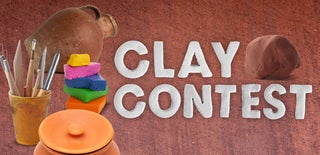Introduction: Majora's Mask Replica
When I heard that Majora's Mask was getting a remake for the 3DS I was excited that I would get a chance to finally experience a classic game on a modern console (seeing as I couldn't play the N64 version). This project was originally meant to be done by the remakes release date but real life got in the road and postponed the final product. I never planned on making an guide for this so their aren't many photos of the steps involve in shaping, molding, casting, and painting my interpretation of the iconic Majora's Mask.
To create this replica, a number of things are needed:
- A sulpur free clay. In order to make sure the silicone mold cures correctly you need to use a sulfur free modeling medium. I was very lucky in getting Monster Clay on special, it's a really good medium to work with. Heat it up in the microwave for 3-4 minutes and it stays soft and malleable for hour, and once it is hard you can carve more intricate details into it. For this project I'm using 2 tubs of 2.2 kgs (or 10 pounds total)
- A silcone solution for the mold. I'm in Australia so the Smooth-on products are hard to get, however this alternative PinkySil is fairly good and relatively cheap.
- A casting medium. I chose a 2 part polyurethane resin which sets fairly quickly, and is light weight.
You could just make a display piece using air dry clay, but I like being able to wear things.
Step 1: Scuplting
Apologies for the lack of images, wasn't originally documenting this. The first step is to sculpt the heart shaped base of the mask. I knew I wouldn't be able to get it perfectly smooth while scuplting by hand, so I first made a 'rough' based in clay, cast that with the resin, and used car filler to fill in the bumps and fix the symmetry. I then used this as a base for the finer details.
I measured and drew all the details onto the base so I could build up on it with the Monster Clay piece by piece. Seriously, measure twice and plan ahead of what your doing, it took me ages to get to a point where I was happy with the sculpt and not want to start again. I decided to go for a more 'organic' look with the side horns, making them burst out the head rather than sticking 10 cones onto the mask and calling it pretty.
Now that it's looking all nice and pretty, time to make a jacket mold.
Step 2: Creating a 1 Piece Mold and Casting
Because the shape of the mask is fairly simple, it is easy to make a 1 piece silicone mold to capture all the details in the sculpture. For most types of 2 part silicone's, an equal volume of Part A and Part B are measured out and mixed together. Usually they are different colours (PinkySil is coincidently, pink and white, making a light pink liquid) so you know when they are ready to use, and once mixed correctly you have a few minutes working time. Also with certain silicone products a release agent is needed to seperate the jacket and original scuplt, but PinkySil is a self-releasing agent so it doesn't stick once cured.
Once the model is covered in a decently thick silicone jacket, you needed to make a mother mold. There are several better instructables on here on how to make one, but basically you get a material you can shape and harden to make sure that the silicone jacket keeps it shape when casting. I used some leftover fiberglass matting to do mine, but plaster cloth or something similar would work fine too. Once it's hard takeout the original model and now you have a detail jacket and mother mold shell.
To get a cast of the mask, I poured the EasyCast resin into the jacket in small amounts, slowing building the thickness of the resin in several layers. I cut small slits onto the backs of the horns to remove the cast, so I held those shut and cast the horns carefully.
If everything worked out correctly, you should have a clean first cast. It may still need some sanding and/or cleaning up due to bubbles.
Step 3: There Were Some...failures
I messed up my initial cast and forgot some details on the model, so I used this copy as a testing canvas for paints and measurements for any last minute details.
Step 4: Time to Paint!
Now that the cast is nice and clean, we can paint. I picked up a bunch of cheap acrylic paints and paintbrushes and tested the colours on some scrap casts I had done. This part fairly simple, I started with the base colours that took up the most space, masking off areas for a clean edge, and sponged paint in layers onto the horns and eyes to give them some more depth (very happy with the eyes). Finally finished everything off with a goat of clear satin spray paint to seal the colours in and give it a slight glossy sheen (I didn't want the shine that gloss paint would give).
And we're done. While I don't have any plans to do any cosplaying as Skull Kid or feel an urge to head butt the moon, it should look pretty nice as a display piece on my wall.

Participated in the
Clay Contest

Participated in the
Halloween Props Contest 2015

Participated in the
Fandom Contest













